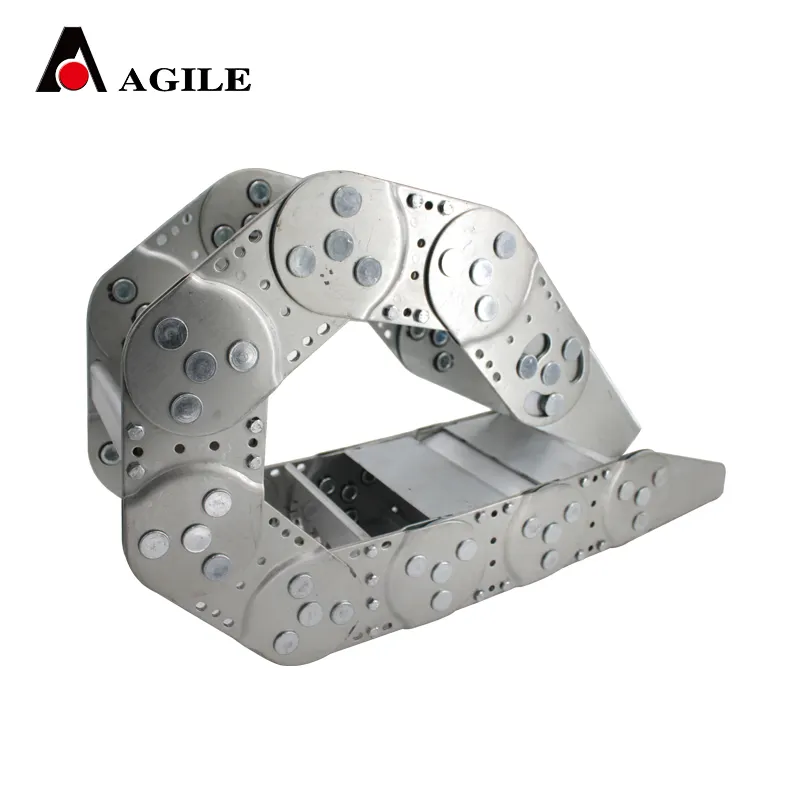Innovative Solutions for Flexible Cable Track Systems in Modern Applications
The Evolution and Benefits of Flexible Cable Tracks
In an era marked by rapid technological advancements, industries are continuously seeking ways to optimize efficiency and enhance mobility within their operating environments. One innovation that has gained significant traction is the flexible cable track system. This engineering solution has transformed the management of electrical cables and hoses, ensuring that they remain organized and functional in various applications. This article delves into the evolution, design, benefits, and applications of flexible cable tracks.
Evolution of Cable Management Systems
Historically, industries relied on rigid conduits and cable trays for management, which often led to cumbersome installations and difficulties in maintenance. As automation and robotics began to integrate into manufacturing floors, the need for more versatile and effective cable management solutions became apparent. Enter flexible cable tracks conceived from the necessity for dynamic cable management, these tracks are designed to accommodate movement in multiple directions, allowing for greater freedom and flexibility.
Flexible cable tracks typically feature a series of linked segments made from robust materials such as plastic or metal, which can bend and twist while maintaining the integrity of the cables they carry. This design allows for less stress on the cables, reducing wear and tear while promoting a tidy working environment.
Design and Construction
The design of flexible cable tracks can vary significantly based on the application requirements. Factors such as load capacity, environmental conditions, and the type of cables being managed are critical in determining the configuration of a cable track system. Common designs include open or closed tracks that can support multiple cables, hoses, or chains simultaneously, thus optimizing space utilization.
Modular designs are particularly advantageous, allowing for easy customization and expansion. Users can tailor the lengths and bends of the tracks to fit their specific layout, which leads to less wasted space and reduced installation times. Additionally, manufacturers often provide options for different track widths and materials, accommodating a wide spectrum of industrial needs.
Benefits of Flexible Cable Tracks
flexible cable track

The deployment of flexible cable tracks offers numerous benefits. Firstly, they enhance safety within the workspace. By organizing cables and hoses neatly, the risk of trips and falls is significantly reduced, creating a safer environment for workers. Proper cable management also helps prevent electrical hazards that can arise from damaged or improperly secured cables.
Secondly, flexible cable tracks improve the longevity of cables. By minimizing the stress and strain that cables experience during movement, these tracks help prolong the life of electrical components, ultimately saving companies money on replacements and repairs.
Cost efficiency is another significant advantage. With reduced maintenance needs and fewer replacements required, businesses experience lower operational costs over time. The simplicity of installation and adaptability of flexible cable tracks further contribute to their cost-effectiveness, as they require less labor and time to set up compared to traditional cable management systems.
Finally, flexible cable tracks offer aesthetic benefits. A well-organized workspace not only appears more professional but also enhances operational efficiency. Cluttered cables can lead to confusion and disrupt workflow, whereas organized systems promote a clear understanding of the layout, allowing for better navigation and management of resources.
Applications Across Industries
The versatility of flexible cable tracks means they find applications across various sectors, including manufacturing, robotics, automotive, and even in everyday settings like smart homes. In manufacturing plants, they are frequently used in machinery where constant movement is involved, while in robotics, they play a crucial role in maintaining the functionality of robotic arms and automated systems.
Moreover, with the rise of automation in industries, flexible cable tracks are becoming integral to ensuring uninterrupted electrical supply and control to moving parts, which are essential for maintaining productivity.
Conclusion
In conclusion, flexible cable tracks represent a significant advancement in cable management technology, providing a solution that balances functionality, safety, and cost-effectiveness. Their design evolution has paved the way for more organized and efficient industrial operations. As industries continue to embrace automation and smart technologies, the role of flexible cable tracks is bound to become even more critical, making them an essential component in modern engineering and manufacturing.








